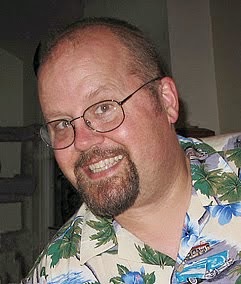A First Class Flight
I was born on July 20th,
1969, and as my feet touched the Earth for the first time in a hospital room in
Southern California, so too did Neil Armstrong take his first steps onto the
surface of the Moon. Not surprisingly,
I’m heavily biased when it comes to my appreciation of space exploration and
all of NASA’s stellar accomplishments in the decades since that
history-defining moment. Despite how
auspicious both events were (for very different reasons) Neil’s journey was
much more perilous than mine!
Still, it is incredibly
ironic that so much sacrifice should finally result is a perfect touchdown of
the Eagle lander in the Sea of Tranquility
But why tell this story
again? There have been so many dramatic
films and documentaries through the years that have thoroughly examined the
vast and complex history of American space flight. What pieces could still be missing from this
puzzle? The answer is obvious to an
aficionado like me: the personal stories of the men and women involved and how
the immense pressure from the maelstrom of world political debate affected them
and their families, especially given the ever-present mortal impact if a
mission should go awry.
I’ve not seen any of Damien
Chazelle’s other films, but what most excited me about “First Man” was this
young director’s decision to frame the story so that the experience of watching
the film occurs mostly from the perspective of Neil Armstrong. Through every training test, every launch and
every escape from a seeming certain death, you are inside the vehicle with
Neil. As the metal creaks and the
vehicle shakes to the point where it seems everything might suddenly
disintegrate, you are shoulder to shoulder with him. The film is an utterly immersive and at times
harrowing experience that is terrifying and exhilarating in equal measure.
But what about the
wives? They didn’t have this unique
experience, and their knowledge of what their husbands were going through came
mostly through radio or television broadcasts as they were not allowed in
Mission Control or anywhere near where their husbands were risking their
lives. I cannot imagine the stress that
this would place on any relationship, especially in an era where introspection
and emotional vulnerability were NOT looked upon as ideal characteristics for
men or women. Regardless of the weight of your pain, you
were expected to carry it without utterance.
Talk about pressure! And enduring all of this while trying to
survive piloting yet another newly minted machine that had hardly been tested
much less fully de-bugged! I get
stressed just thinking about it, and yet these men repeatedly cued up for the
death-defying challenge while their wives bore the burden of waiting and hoping
to never get that one phone call that would shatter their lives and families
forever. Those calls happened often
during the years leading up to and after the Moon landing, and Claire Foy as
Neil Armstrong’s wife Janet does a superlative job of presenting a woman who
truly loves her husband but is deeply conflicted about his career path.
I’ve never been a big fan of
Ryan Gosling, as he usually presents a placid façade beneath which roils potentially
deep and turbulent waters. For me, this
gets repetitive quickly, but it makes Gosling a superb choice to play Neil
Armstrong. Neil was a very quiet and
reserved man who spoke almost curtly and instead let his actions do the
talking. It is a welcome addition to
this film that Gosling’s performance includes a few scenes in which he displays
heartbreaking sorrow. It makes his
character seem much less robotic and more sympathetic.
The final mission to the Moon
is a white-knuckle descent into beautiful desolation. Again, the camera is rooted inside the
vehicle, placing you directly alongside the characters. You effectively become another crew member,
watching in mounting anticipation and dread, fervently hoping for success
against the seemingly illimitable odds.
The entire lunar sequence is nearly silent, and the lack of musical
fanfare allows the enormity of this penultimate moment to breathe and deeply
resonate within. I’m always SO grateful
when filmmakers understand the power of silence.
If only more audiences did,
but that’s a rant for another time!









